- Home
- Kurt Vonnegut
Hocus Pocus Page 2
Hocus Pocus Read online
Page 2
They kept the pioneers supplied with cigars, among other things, so that cigars nowadays, in the year 2001, are still called "stogies" sometimes, which is short for "Conestoga."
By 1830, the sturdiest and most popular of these wagons were in fact made by the Mohiga Wagon Company right here in Scipio, New York, at the pinched waist of Lake Mohiga, the deepest and coldest and westernmost of the long and narrow Finger Lakes. So sophisticated cigar-smokers might want to stop calling their stinkbombs "stogies" and call them "mogies" or "higgies" instead.
THE FOUNDER OF the Mohiga Wagon Company was Aaron Tarkington, a brilliant inventor and manufacturer who nevertheless could not read or write. He now would be identified as a blameless inheritor of the genetic defect known as dyslexia. He said of himself that he was like the Emperor Charlemagne, "too busy to learn to read and write." He was not too busy, however, to have his wife read to him for 2 hours every evening. He had an excellent memory, for he delivered weekly lectures to the workmen at the factory that were laced with lengthy quotations from Shakespeare and Homer and the Bible, and on and on.
He sired 4 children, a son and 3 daughters, all of whom could read and write. But they still carried the gene of dyslexia, which would disqualify several of their own descendants from getting very far in conventional schemes of education. Two of Aaron Tarkington's children were so far from being dyslexic, in fact, as to themselves write books, which I have read only now, and which nobody, probably, will ever read again. Aaron's only son, Elias, wrote a technical account of the construction of the Onondaga Canal, which connected the northern end of Lake Mohiga to the Erie Canal just south of Rochester. And the youngest daughter, Felicia, wrote a novel called Carpathia, about a head-strong, high-born young woman in the Mohiga Valley who fell in love with a half-Indian lock-tender on that same canal.
THAT CANAL IS all filled in and paved over now, and is Route 53, which forks at the head of the lake, where the locks used to be. One fork leads southwest through farm country to Scipio. The other leads southeast through the perpetual gloom of the Iroquois National Forest to the bald hilltop crowned by the battlements of the New York State Maximum Security Adult Correctional Institution at Athena, a hamlet directly across the lake from Scipio.
Bear with me. This is history. I am trying to explain how this valley, this verdant cul-de-sac, got to be what it is today.
ALL 3 OF Aaron Tarkington's daughters married into prosperous and enterprising families in Cleveland, New York, and Wilmington, Delaware--innocently making the threat of dyslexia pandemic in an emerging ruling class of bankers and industrialists, largely displaced in my time by Germans, Koreans, Italians, English, and, of course, Japanese.
The son of Aaron, Elias, remained in Scipio and took over his father's properties, adding to them a brewery and a steam-driven carpet factory, the first such in the state. There was no water power in Scipio, whose industrial prosperity until the introduction of steam was based not on cheap energy and locally available raw materials but on inventiveness and high standards of workmanship.
Elias Tarkington never married. He was severely wounded at the age of 54 while a civilian observer at the Battle of Gettysburg, top hat and all. He was there to see the debuts of 2 of his inventions, a mobile field kitchen and a pneumatic recoil mechanism for heavy artillery. The field kitchen, incidentally, with slight modifications, would later be adopted by the Barnum & Bailey Circus, and then by the German Army during World War I.
ELIAS TARKINGTON WAS a tall and skinny man with chin whiskers and a stovepipe hat. He was shot through the right chest at Gettysburg, but not fatally.
The man who shot him was 1 of the few Confederate soldiers to reach the Union lines during Pickett's Charge. That Johnny Reb died in ecstasy among his enemies, believing that he had shot Abraham Lincoln. A crumbling newspaper account I have found here in what used to be the college library, which is now the prison library, gives his last words as follows: "Go home, Bluebellies. Old Satan's daid."
During my 3 years in Vietnam, I certainly heard plenty of last words by dying American footsoldiers. Not 1 of them, however, had illusions that he had somehow accomplished something worthwhile in the process of making the Supreme Sacrifice.
One boy of only 18 said to me while he was dying and I was holding him in my arms, "Dirty joke, dirty joke."
3
ELIAS TARKINGTON, THE severely wounded Abraham Lincoln look-alike, was brought home in 1 of his own wagons to Scipio, to his estate overlooking the town and lake.
He was not well educated, and was more a mechanic than a scientist, and so spent his last 3 years trying to invent what anyone familiar with Newton's Laws would have known was an impossibility, a perpetual-motion machine. He had no fewer than 27 contraptions built, which he foolishly expected to go on running, after he had given them an initial spin or whack, until Judgment Day.
I found 19 of those stubborn, mocking machines in the attic of what used to be their inventor's mansion, which in my time was the home of the College President, about a year after I came to work at Tarkington. I brought them back downstairs and into the 20th Century. Some of my students and I cleaned them up and restored any parts that had deteriorated during the intervening 100 years. At the least they were exquisite jewelry, with garnets and amethysts for bearings, with arms and legs of exotic woods, with tumbling balls of ivory, with chutes and counterweights of silver. It was as though dying Elias hoped to overwhelm science with the magic of precious materials.
The longest my students and I could get the best of them to run was 51 seconds. Some eternity!
TO ME, AND I passed this on to my students, the restored devices demonstrated not only how quickly anything on Earth runs down without steady infusions of energy. They reminded us, too, of the craftsmanship no longer practiced in the town below. Nobody down there in our time could make things that cunning and beautiful.
Yes, and we took the 10 machines we agreed were the most beguiling, and we put them on permanent exhibit in the foyer of this library underneath a sign whose words can surely be applied to this whole ruined planet nowadays:
THE COMPLICATED FUTILITY OF IGNORANCE
I HAVE DISCOVERED from reading old newspapers and letters and diaries from back then that the men who built the machines for Elias Tarkington knew from the first that they would never work, whatever the reason. Yet what love they lavished on the materials that comprised them! How is this for a definition of high art: "Making the most of the raw materials of futility"?
STILL ANOTHER PERPETUAL-MOTION machine envisioned by Elias Tarkington was what his Last Will and Testament called "The Mohiga Valley Free Institute." Upon his death, this new school would take possession of his 3,000-hectare estate above Scipio, plus half the shares in the wagon company, the carpet company, and the brewery. The other half was already owned by his sisters far away. On his deathbed he predicted that Scipio would 1 day be a great metropolis and that its wealth would transform his little college into a university to rival Harvard and Oxford and Heidelberg.
It was to offer a free college education to persons of either sex, and of any age or race or religion, living within 40 miles of Scipio. Those from farther away would pay a modest fee. In the beginning, it would have only 1 full-time employee, the President. The teachers would be recruited right here in Scipio. They would take a few hours off from work each week, to teach what they knew. The chief engineer at the wagon company, for example, whose name was Andre Lutz, was a native of Liege, Belgium, and had served as an apprentice to a bell founder there. He would teach Chemistry. His French wife would teach French and Watercolor Painting. The brewmaster at the brewery, Hermann Shultz, a native of Leipzig, would teach Botany and German and the flute. The Episcopalian priest, Dr. Alan Clewes, a graduate of Harvard, would teach Latin, Greek, Hebrew, and the Bible. The dying man's physician, Dalton Polk, would teach Biology and Shakespeare, and so on.
And it came to pass.
In 1869 the new college enrolled its first class, 9 stude
nts in all, and all from right here in Scipio. Four were of ordinary college age. One was a Union veteran who had lost his legs at Shiloh. One was a former black slave 40 years old. One was a spinster 82 years old.
THE FIRST PRESIDENT was only 26 years old, a schoolteacher from Athena, 2 kilometers by water from Scipio. There was no prison over there back then, but only a slate quarry and a sawmill and a few subsistence farms. His name was John Peck. He was a cousin of the Tarkingtons'. His branch of the family, however, was and remains unhampered by dyslexia. He has numerous descendants in the present day, 1 of whom, in fact, is a speech writer for the Vice-President of the United States.
Young John Peck and his wife and 2 children and his mother-in-law arrived at Scipio by rowboat, with Peck and his wife at the oars, their children seated in the stern, arid their luggage and the mother-in-law in another boat they towed behind.
They took up residence on the third floor of what had been Elias Tarkington's mansion. The rooms on the first 2 floors would be classrooms, a library, which was already a library with 280 volumes collected by the Tarkingtons, study halls, and a dining room. Many treasures from the past were taken up to the attic to make room for the new activities. Among these were the failed perpetual-motion machines. They would gather dust and cobwebs until 1978, when I found them up there, and realized what they were, and brought them down the stairs again.
ONE WEEK BEFORE the first class was held, which was in Latin, taught by the Episcopalian priest Alan Clewes, Andre Lutz the Belgian arrived at the mansion with 3 wagons carrying a very heavy cargo, a carillon consisting of 32 bells. He had cast them on his own time and at his own expense in the wagon factory's foundry. They were made from mingled Union and Confederate rifle barrels and cannonballs and bayonets gathered up after the Battle of Gettysburg. They were the first bells and surely the last bells ever to be cast in Scipio.
Nothing, in my opinion, will ever again be cast in Scipio. No industrial arts of any sort will ever again be practiced here.
ANDRE LUTZ GAVE the new college all those bells, even though there was no place to hang them. He said he did it because he was so sure that it would 1 day be a great university with a bell tower and everything. He was dying of emphysema as a result of the fumes from molten metals that he had been breathing since he was 10 years old. He had no time to wait for a place to hang the most wonderful consequence of his having been alive for a little while, which was all those bells, bells, bells.
They were no surprise. They had been 18 months in the making. The founders whose work he supervised had shared his dreams of immortality as they made things as impractical and beautiful as bells, bells, bells.
So all the bells but 1 from a middle octave were slathered with grease to prevent their rusting and stored in 4 ranks in the estate's great barn, 200 meters from the mansion. The 1 bell that was going to get to sing at once was installed in the cupola of the mansion, with its rope running all the way down to the first floor. It would call people to classes and, if need be, also serve as a fire alarm.
The rest of the bells, it turned out, would slumber in the loft for 30 years, until 1899, when they were hanged as a family, the 1 from the cupola included, on axles in the belfry of the tower of a splendid library given to the school by the Moellenkamp family of Cleveland.
The Moellenkamps were also Tarkingtons, since the founder of their fortune had married a daughter of the illiterate Aaron Tarkington. Eleven of them so far had been dyslexic, and they had all gone to college in Scipio, since no other institution of higher learning would take them in.
THE FIRST MOELLENKAMP to graduate from here was Henry, who enrolled in 1875, when he was 19, and when the school was only 6 years old. It was at that time that its name was changed to Tarkington College. I have found the crumbling minutes of the Board of Trustees meeting at which that name change was made. Three of the 6 trustees were men who had married daughters of Aaron Tarkington, 1 of them the grandfather of Henry Moellenkamp. The other 3 trustees were the Mayor of Scipio, and a lawyer who looked after the Tarkington daughters' interests in the valley, and the area Congressman, who was surely the sisters' faithful servant, too, since they were partners with the college in his district's most important industries.
And according to the minutes, which fell apart in my hands as I read them, it was the grandfather of young Henry Moellenkamp who proposed the name change, saying that "The Mohiga Valley Free Institute" sounded too much like a poorhouse or a hospital. It is my guess that he would not have minded having the place sound like a catchment for the poor, if only he had not suffered the misfortune of having his own grandson go there.
IT WAS IN that same year, 1875, that work began across the lake from Scipio, on a hilltop above Athena, on a prison camp for young criminals from big-city slums. It was believed that fresh air and the wonders of Nature would improve their souls and bodies to the point that they would find it natural to be good citizens.
WHEN I CAME to work at Tarkington, there were only 30C students, a number that hadn't changed for 50 years. But the rustic work-camp across the lake had become a brutal fortress of iron and masonry on a naked hilltop, the New York State Maximum Security Adult Correctional Institution at Athena, keeping 5,000 of the state's worst criminals under lock and key.
Two years ago, Tarkington still had only 300 students, but the population of the prison, under hideously overcrowded conditions, had grown to 10,000. And then, 1 cold winter's night, it became the scene of the biggest prison break in American history. Until then, nobody had ever escaped from Athena.
Suddenly, everybody was free to leave, and to take a weapon from the prison armory, too, if he had use for 1. The lake between the prison and the little college was frozen solid, as easily traversed as the parking lot of a great shopping mall.
What next?
YES, AND BY the time Andre Lutz's bells were at last made to sing as a carillon, Tarkington College had not only a new library but luxurious dormitories, a science building, an art building, a chapel, a theater, a dining hall, an administration building, 2 new buildings of classrooms, and athletic facilities that were the envy of the institutions with which it had begun to compete in track and fencing and swimming and baseball, which were Hobart, the University of Rochester, Cornell, Union, Amherst, and Bucknell.
These structures bore the names of wealthy families as grateful as the Moellenkamps for all the college had managed to do for offspring of theirs whom conventional colleges had deemed ineducable. Most were unrelated to the Moellenkamps or to anyone who carried the Tarkington gene of dyslexia. Nor were the young they sent to Tarkington necessarily troubled by dyslexia. All sorts of different things were wrong with them, including an inability to write legibly with pen and ink, although what they tried to write down made perfect sense, and stammering so severe as to prevent their saying a word in class, and petit mal, which caused their minds to go perfectly blank for seconds or minutes anywhere, anytime, and so on.
It was simply the Moellenkamps who first challenged the new little college to do what it could for a seemingly hopeless case of plutocratic juvenile incapacity, namely Henry. Not only would Henry graduate with honors from Tarkington. He would go on to Oxford, taking with him a male companion who read aloud to him and wrote down thoughts Henry could only express orally. Henry would become 1 of the most brilliant speakers in a golden age of American purple, bow-wow oratory, and serve as a Congressman and then a United States Senator from Ohio for 36 years.
THAT SAME HENRY Moellenkamp was author of the lyrics to one of the most popular turn-of-the-century ballads, "Mary, Mary, Where Have You Gone?"
The melody of that ballad was composed by Henry's friend Paul Dresser, brother of the novelist Theodore Dreiser. This was 1 of the rare instances in which Dresser set another man's words to music instead of his own. And then Henry appropriated that tune and wrote, or rather dictated, new words which sentimentalized student life in this valley.
Thus was "Mary, Mary, Where Have You Gone?" tran
smogrified into the alma mater of this campus until it became a penitentiary 2 years ago.
History.
ACCIDENT AFTER ACCIDENT has made Tarkington what it is today. Who would dare to predict what it will be in 2021, only 20 years from now? The 2 prime movers in the Universe are Time and Luck.
As the tag line of my favorite dirty joke would have it: "Keep your hat on. We could wind up miles from here."
IF HENRY MOELLENKAMP had not come out of his mother's womb dyslexic, Tarkington College wouldn't even have been called Tarkington College. It would have gone on being The Mohiga Valley Free Institute, which would have died right along with the wagon factory and the carpet factory and the brewery when the railroads and highways connecting the East and West were built far to the north and south of Scipio--so as not to bridge the lake, so as not to have to penetrate the deep and dark virgin hardwood forest, now the Iroquois National Forest, to the east and south of here.
IF HENRY MOELLENKAMP hadn't come out of his mother's womb dyslexic, and if that mother hadn't been a Tarkington and so known about the little college on Lake Mohiga, this library would never have been built and filled with 800,000 bound volumes. When I was a professor here, that was 70,000 more bound volumes than Swarthmore College had! Among small colleges, this library used to be second only to the 1 at Oberlin, which had 1,000,000 bound volumes.
So what is this structure in which I sit now, thanks to Time and Luck? It is nothing less, friends and neighbors, than the greatest prison library in the history of crime and punishment!

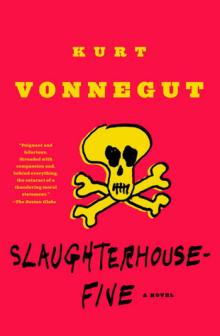 Slaughterhouse-Five
Slaughterhouse-Five Bagombo Snuff Box: Uncollected Short Fiction
Bagombo Snuff Box: Uncollected Short Fiction God Bless You, Dr. Kevorkian
God Bless You, Dr. Kevorkian Breakfast of Champions
Breakfast of Champions While Mortals Sleep: Unpublished Short Fiction
While Mortals Sleep: Unpublished Short Fiction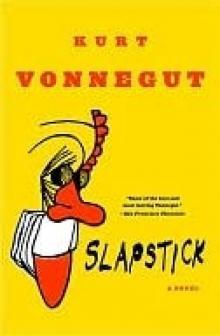 Slapstick or Lonesome No More!
Slapstick or Lonesome No More!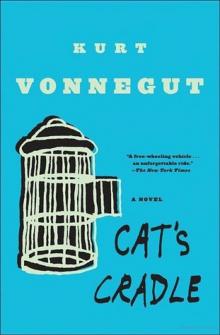 Cat's Cradle
Cat's Cradle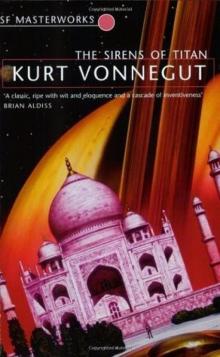 The Sirens of Titan
The Sirens of Titan A Man Without a Country
A Man Without a Country Look at the Birdie: Unpublished Short Fiction
Look at the Birdie: Unpublished Short Fiction Bluebeard
Bluebeard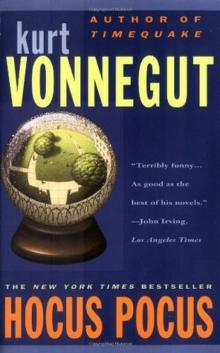 Hocus Pocus
Hocus Pocus The Big Trip Up Yonder
The Big Trip Up Yonder Palm Sunday: An Autobiographical Collage
Palm Sunday: An Autobiographical Collage Jailbird
Jailbird Happy Birthday, Wanda June
Happy Birthday, Wanda June Welcome to the Monkey House
Welcome to the Monkey House Player Piano
Player Piano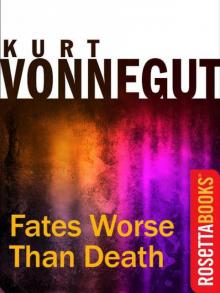 Fates Worse Than Death: An Autobiographical Collage
Fates Worse Than Death: An Autobiographical Collage Love, Kurt
Love, Kurt Timequake
Timequake God Bless You, Mr. Rosewater
God Bless You, Mr. Rosewater 2 B R 0 2 B
2 B R 0 2 B The Eden Express: A Memoir of Insanity
The Eden Express: A Memoir of Insanity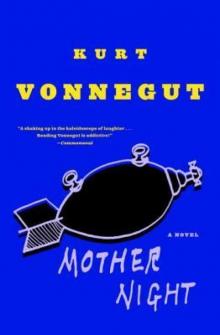 Mother Night
Mother Night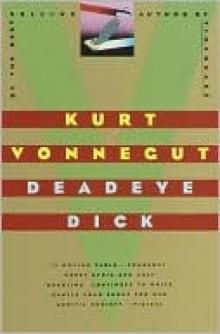 Deadeye Dick
Deadeye Dick Galápagos
Galápagos Palm Sunday
Palm Sunday We Are What We Pretend to Be
We Are What We Pretend to Be Look at the Birdie
Look at the Birdie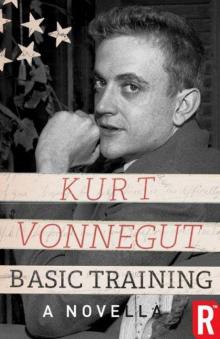 Basic Training
Basic Training Armageddon in Retrospect
Armageddon in Retrospect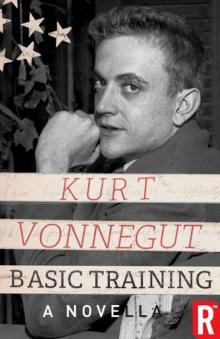 Basic Training (Kindle Single)
Basic Training (Kindle Single) If This Isn't Nice, What Is?
If This Isn't Nice, What Is? Bagombo Snuff Box
Bagombo Snuff Box The Petrified Ants
The Petrified Ants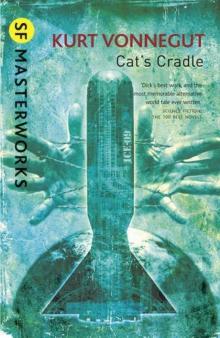 Cat's Cradle: A Novel
Cat's Cradle: A Novel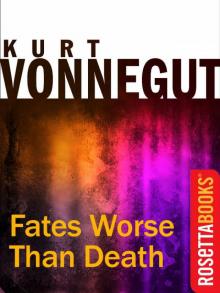 Fates Worse Than Death: An Autobiographical Collage (Kurt Vonnegut Series)
Fates Worse Than Death: An Autobiographical Collage (Kurt Vonnegut Series)